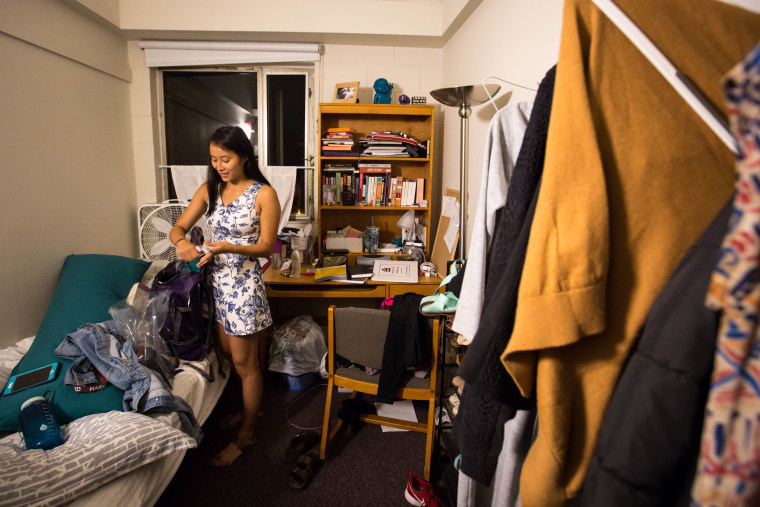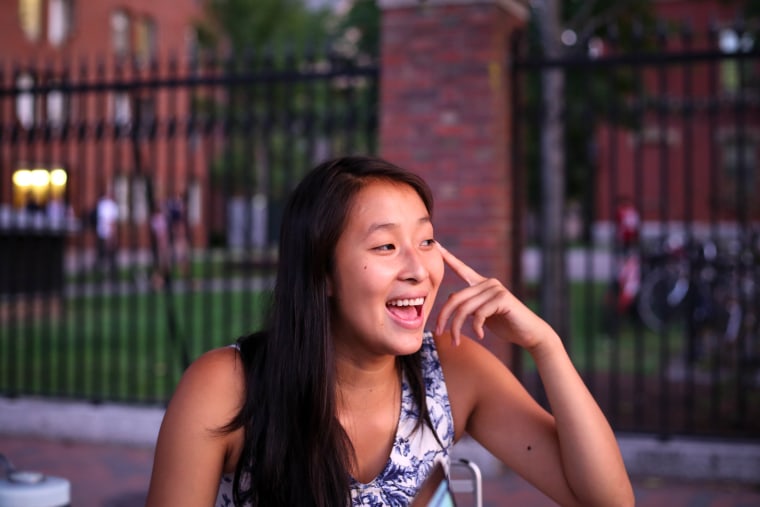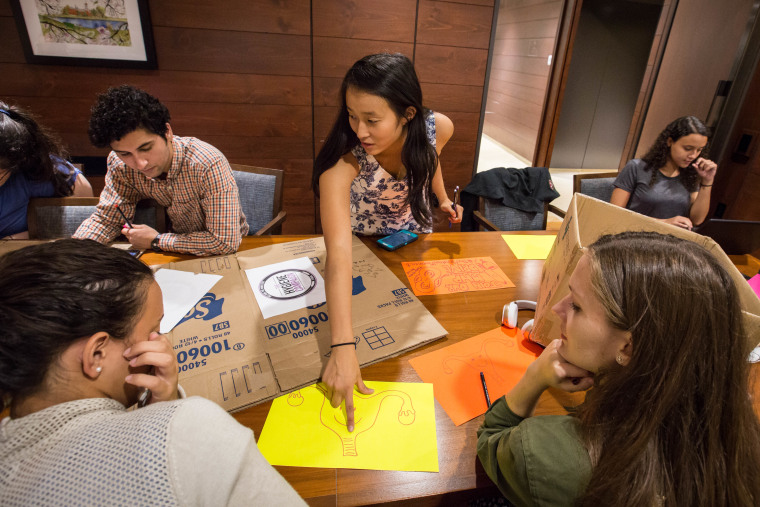For seven months, a 15-year-old Nadya Okamoto would wait for the bus on the edge of Chinatown and talk to women about their periods. Living in Portland, Oregon, she commuted two hours to and from school every day — a change since her mother lost her job at a non-profit clinic, which rendered their family homeless. Okamoto couchsurfed among family friends for those months, which she called her “time of transition,” but she also met many other homeless women who had a stories to share.
“It was a privilege check for me, talking to these women who were in a worse situation than I was,” the now 18-year-old Okamoto told NBC News. “After getting to know them, we’d start getting into all these conversations about how challenging periods were for them.”
Instead of pads, many of these women used scraps of paper from Trader Joe’s bags, toilet paper, or old clothing, Okamoto, currently a freshman at Harvard, said. Their struggles inspired her to co-found Camions of Care, a nonprofit with her friend, Vincent Forand, in order to distribute feminine hygiene products to women in need.
Okamoto said that, in the last 18 months, Camions of Care has supplied 22,000 care packages in 17 different states with the help of about 2,200 volunteers.

“Periods are the greatest equalizer,” she said, addressing a group of students at the Harvard Hygiene Campaign club. “It’s something we can all bond over. That’s why we’ve been so successful ... It’s because periods are universal — people can just relate to it.”
There are at least seven other groups giving out feminine hygiene products in addition to Camions of Care, and they’re all part of a greater “menstrual equity movement,” a term made popular by recent legislation pushing for better access.
“It was a privilege check for me, talking to these women who were in a worse situation than I was. After getting to know them, we’d start getting into all these conversations about how challenging periods were for them.”
“[The movement] is about making sure that all women have access independent of their class or their race – whether they’re living behind bars or not, or living on the street or in a comfortable town house,” Chris Bobel, president of the Society for Menstrual Cycle Research, told NBC News. “It’s also equity in that women should not be held back by their periods. This is a biological process, not a choice.”
According to Bobel, period activism started in the late 1960s, but only entered the mainstream within the last five years.
“The movement began and pretty much remained on the fringes — the ‘freaks,’ the ‘lefties’ and the ‘radicals’ crowned this as a compelling concern,” Bobel said. “But now, it’s moving from the margins to the center.”
June was the first time a U.S. city promised to provide feminine hygiene products to the public — according to the New York Times — when the New York City Council approved a $2.5 million program to supply them to women in public schools, homeless shelters, and prisons. The menstrual equity movement also advocates for the end of the “period tax,” or “tampon tax,” which currently exists in 37 states.

But for Okamoto, a Japanese and Taiwanese American, race has been its own problem. For the seven months that she was homeless, she didn’t tell most people about her personal struggles for fear that they wouldn’t understand, she said. It’s a common complaint among Asian Americans, whose troubles are often hidden by the “model minority myth,” Okamoto said, a sociological term that refers to how Asian Americans are falsely stereotyped as wealthy, high-achievers.
“People assumed that I was smart and had rich parents who were working in computer science. It made it really hard for me,” she said. “By having this identity as an overachiever and a ‘try hard’ — but also identities like ‘homeless’ and ‘victim’ – I really thought I was living this double life.”
Although she walked into Harvard as “the period girl,” Okamoto is “still figuring things out” — she’s buying her first skateboard, going to dance practice and blogging about women’s issues.
On the way to dance practice one night, Okamoto mentioned that she wanted to run for office in the next five years, but she had already changed her mind by the next day. Every night, she has a ritual of going through her phone schedule and ruling out tomorrow’s overcommitments, she said. Camions of Care is one of the many things she decides to keep on the list.
“Yesterday, it was hard because I got up and I was like, ‘Why am I doing this? I’m so tired,’” she said, laughing. “All I know is that I want to be working on an international scale and addressing social justice. I’m not considering [stopping] anytime soon.”
Follow NBC Asian America on Facebook, Twitter, Instagram, and Tumblr.
Correction: An earlier version of this story stated that Okamoto was homeless for nine months. She was homeless for seven.
